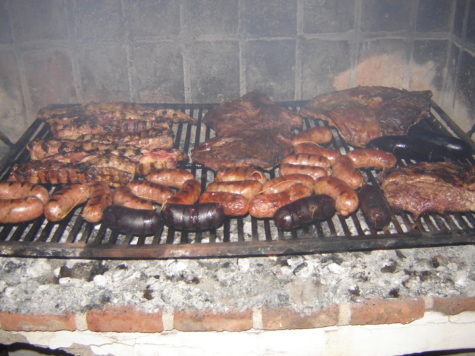Queens and Cuisine: Exploring Argentina
From the queens of Jujuy to cuts of meats for barbeque, there are some things you can only find in Argentina.
September 29, 2021
Every year, queens flood into the Argentinian province of Jujuy.
The very first province in the North of Argentina, Jujuy is the one that “looks like a shoe,” Marcela Navarro, who grew up in the province, said.
When discussing Argentina, three things tend to come up – Patagonia, Buenos Aires, and the tango. While these all compose part of Argentinian culture, not delving deeper would be an injustice to the layers of flavor and tradition that lie beyond that.
Navarro begins describing the beauty of Argentina with the seasons. “It has all of the seasons. All over the country the seasons are really marked so you can enjoy every season. Not like here, in Texas, where it’s hot the whole year.”
However, when Navarro considers what she misses most about Argentina, she says “I miss my family. I miss the food.”
Argentinian cuisine has been stirred around in a melting pot for decades, centuries even. Influence from Italian, German, even Syrian tastes has shaped the flavors of the country.

“Where I’m from, this influence is more typical,” Navarro adds, “but the South, the East are influenced by other countries, and you can see this all over Argentina now.”
A mixture of all these different cultures or not, there is still a taste that makes Navarro think specifically of home, of Argentina.
“My favorite food is the barbeque, the asado Argentino.” Navarro said. While she can make empanadas and other Argentinian foods in Texas, asado proves more difficult. “It’s like a barbeque but different types of cuts of meat which you cannot find, sometimes, here.”
Nevertheless, nothing tastes more like home than the sweets you grew up on.

“There is a sweet, Alfajores,” Navarro says, “It is two biscuits put together with dulce de leche in the middle and covered with a chocolate icing or sugar icing, and they are very typical in Argentina, and you can buy them now, everything you can get in Amazon, but it would be, you know, probably triple the price if not more than if you buy it in Argentina.”
Navarro, however, has a strategy. “When I go to Argentina I bring back, like, a couple of boxes, just to keep them here and have my supply.”
Thinking back on traditions, one Navarro loves the most takes place only within the borders of her hometown.
“When I was a teenager, during the Spring we would have what is called La Semana del Estudiante, which is ‘The Students Week,’” Navarro says. “High school students – they participate in making these big floats with paper flowers, and they elect a Queen of that school, and they parade on this float with lights and everything during this week.”
La Semana del Estudiante started around the 1950s as a small event just for the city, “but over the years it’s gotten bigger and bigger,” Navarro explains. “Nowadays, it’s big for the state, who puts a lot of money into the preparations, not only for the schools, but to receive all of the others, the queens that come from out of state to participate.”
This process takes a long time. The high schoolers, mainly juniors and seniors, start to prepare at the end of July or early August.
“It’s something that the students really wait for, and it’s nice to see them be a part of that, and then, maybe, at the end of it, they win a prize. There is a first prize, a second prize, and it’s really emotional for all of them, even if they don’t win, because it’s something very important if they do that when they are in high school. That is something I miss.”
All in all, there is something for everyone waiting within the layers of culture in Argentina.
“The people are really friendly, especially the people from the provinces.” Navarro concludes, “The people from the Metropolitan, well, they’re a different level, but it’s a beautiful country to visit, to try the food. I hope one day you can visit, and enjoy, and see what it is that makes Argentina such a beautiful country.”




